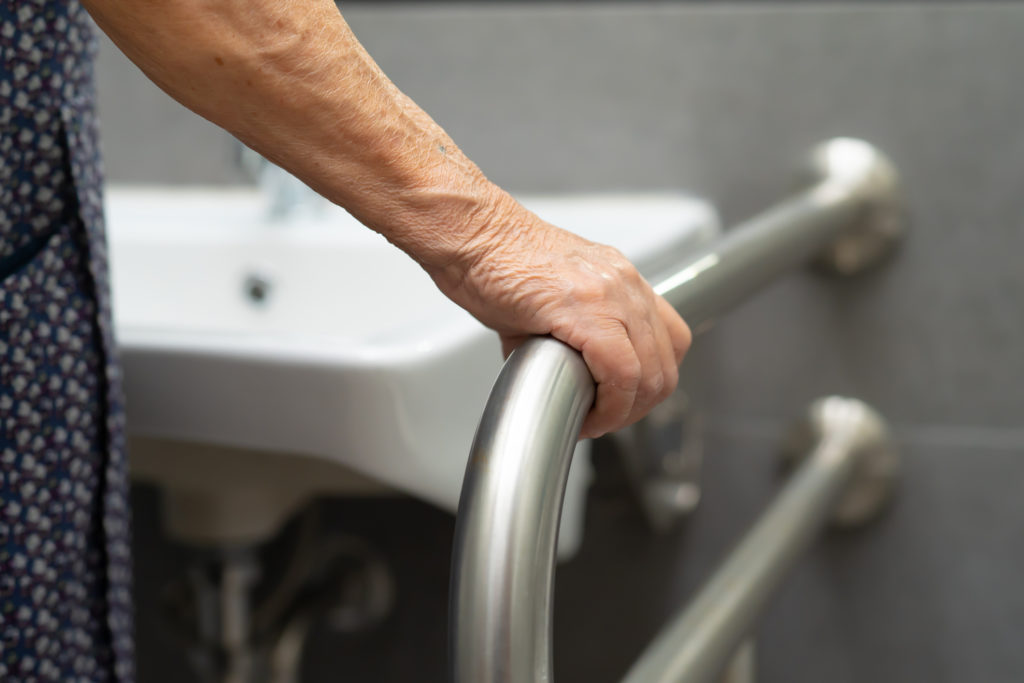‘Be careful out there’ is generally good advice for all the possibly harmful things waiting outside your front door. Having a well-developed sense of caution helps you be ready for just about anything.
But better advice should be along the lines of “Be careful in there,” or more accurately “Be careful everywhere.”
That’s because the typical home can present all sorts of safety hazards, especially for seniors, those with limited mobility, or those dealing with dementia such as Alzheimer’s disease.
Safety professionals say every room has areas of concern, but some are more dangerous than others.
The kitchen, for instance, can have slippery, hard floors and counters, sharp objects, and lots of metal. Kitchen cabinets and cupboards also might contain dangerous chemicals. Even spoiled food can cause severe digestive problems.
The garage also is up there among the unsafe places, usually with sharp objects and dangerous chemicals, plus poor lighting and maybe even a spider or two.
But the room that regularly tops most “danger” lists is the bathroom. It’s a place where everyone visits, sometimes multiple times a day, but also includes sources of potential injury, even death.
Floors are usually hard and can get slippery when wet. Counters are also hard and often have sharp corners. Showers sometimes take some effort to get in and out of. Even a standard toilet may be hard to use if someone has balance problems.
WebMD said that bathrooms are where more than 80 percent of falls occur. Falls, especially for seniors can cause severe injuries and even death. A broken bone or a head injury may even make it so someone is unable to live independently and may have to relocate temporarily or permanently.
How Stuff Works, a mechanical-based site, offered a similar conclusion that bathrooms are the most dangerous room. Although someone is more likely to be poisoned in the kitchen, bathrooms rank higher in injuries and deaths from falls or burns. (This is all ages, not just seniors.) It pointed out there could also be sharp objects laying around that can cause other injuries, like nail files. Besides hot water in the sink, shower or tub, people could also burn themselves on hair dryers or curling irons.
Planning ahead
Even if bathrooms are considered danger zones, there are still things to do to reduce your risk.
- Handles. Secure handles and bars can let people maneuver easier and give them something to grip on to in order to keep their balance. They can also grab on to something if they start to fall. Handles can be placed throughout the bathroom, from the toilet area to the shower.
- Mats. These can still slide around or get wet, but they can also keep the floor from getting dangerously slippery. A mat outside the shower can give you a firmer surface when you exit. A mat in the shower can also make it easier to keep your feet secure.
- Chair. A shower chair can make it easier for someone who may have trouble standing and keeping their balance through an entire shower. Combined with a handheld showerhead can make a shower a relaxing experience.
- Lower shower entrance. Some homes have combined tubs and showers which may require some lifting which can be difficult to get in and out of without assistance. Doing away with the bathtub or creating a separate walk-in shower can reduce any risk.
- A higher toilet. Whether you replace your entire commode or buy an extension, it could make it easier to not have to bend so far.
- An alert system. A risk with falling in the bathroom is that people may not hear you right away, But with a programmed personal device, such as a medical alert, a smart phone, or an Alexa-type room sensor can allow you to alert friends, family, or even call 911. This also lets people be nearby but respect privacy to use the bathroom alone.
- Soft corners. Some people use foam to make bathroom counter corners soft instead of pointed.
- Mechanical fixes. Unless you have the expertise, you may need to bring an expert to do things like lower your water heater temperature, which will reduce the risk of too hot of water coming out of the tap. Someone with electrical experience can also install a special electrical outlet that will cut power if an electrical device, like a hair dryer, touches water.
- Ask for help. If someone isn’t comfortable drawing the water for a bath because of fears of possible burns from hot water, ask someone to do this. Or fill it earlier and do something else until you’re sure it has cooled.
Learn more
There are a variety of experts who can help improve safety and also evaluate homes for possible hazards, including occupational therapists.
It’s also a good time to learn about hazards and what you can do yourself to make the bathroom safer.
January is National Bath Safety Month, an annual occasion that encourages better safety for all ages. There’s a big focus on preventing children from having accidents or drowning in the bath, but there are also things seniors and caregivers can be more aware of.
AARP has added onto the January observance by declaring that January is also Bathroom Safety Month and encourages seniors and caregivers to take a closer look at their bathrooms for possible risks.

